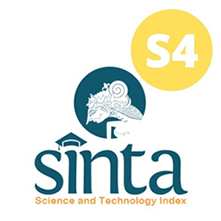Negative Pressure Gauge on a Suction Pump Equipped with MIT APP Inventor-Based Measurement Data Input and Storage
Abstract
Research conducted by Muhaji, Bedjo Santoso, Putrono on the comparison of the effectiveness of two levels of suction pressure on oxygen saturation in endotracheal tube patients. The findings show that there is a significant effect of negative pressure on oxygen saturation. So that the use of the pressure value must be ensured that it is appropriate so as not to injure the patient. The accuracy and accuracy of the pressure value can be ensured by calibrating the suction pump with a calibrator, namely Digital Pressure Meter. From this case, a digital pressure meter module was created with an application. This tool serves to read the pressure value on the suction pump in real time. This tool was created with the aim of measuring negative pressure on a suction pump which is equipped with an application for inputting and storing measurement data based on the MIT App Inventor to make it easier for users to input tool identity and calibration results. To get results that are in accordance with the purpose of writing, using the study method to the library, the preparation stage, the design stage includes making software and hardware, then testing and measuring. Negative pressure measurement testing uses a Suction Pump as a measurement sample and uses 2 comparison tools, namely DPM4 and Manometer. Negative pressure testing was carried out 10 times at each measurement point, namely -10.6, -20, -30 kPa and -80, -150, -225 mmHg. After the measurements were taken, it was concluded that the module test compared to DPM4 obtained an accuracy of 99.09%, while the module test compared to the Manometer obtained an accuracy of 98.85%. Pressure measurement compared to DPM4 has 0.24% higher accuracy than pressure measurement developed with Manometer. This module is designed to be used for power calibration specifically for Suction Pump equipment. To make it easier to use the TFT nexion LCD.

This work is licensed under a Creative Commons Attribution-ShareAlike 4.0 International License.
Authors who publish with this journal agree to the following terms:
- Authors retain copyright and grant the journal right of first publication with the work simultaneously licensed under a Creative Commons Attribution License that allows others to share the work with an acknowledgement of the work's authorship and initial publication in this journal.
- Authors are able to enter into separate, additional contractual arrangements for the non-exclusive distribution of the journal's published version of the work (e.g., post it to an institutional repository or publish it in a book), with an acknowledgement of its initial publication in this journal.
- Authors are permitted and encouraged to post their work online (e.g., in institutional repositories or on their website) prior to and during the submission process, as it can lead to productive exchanges, as well as earlier and greater citation of published work (See The Effect of Open Access).











